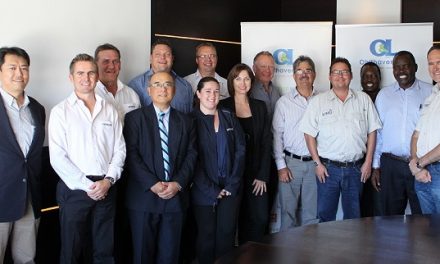
SME applications surge at Development Bank
 Following a massive surge in SME applications in 2011, the Development Bank of Namibia has taken steps to build capacity, and efficiently deal with the increased volume. According to head of lending, Martin Inkumbi, the bank received 363 loan applications between January and September 2011, up from 163 for the same period in 2010.
Following a massive surge in SME applications in 2011, the Development Bank of Namibia has taken steps to build capacity, and efficiently deal with the increased volume. According to head of lending, Martin Inkumbi, the bank received 363 loan applications between January and September 2011, up from 163 for the same period in 2010.
Inkumbi stated that the growth in the number of applications processed by the bank was as a result of a high uptake of the popular bridging finance product to provide SMEs with capital necessary to compete for tenders and contracts, as well as to provide performance guarantees, as a precondition for awarding of tenders and contracts.
“Although the assessment process has to be rapid, the bank is also required to assess the applicant’s ability to manage the business and provide acceptable collateral or any other forms of risk mitigation to ensure capital preservation for the bank. In the case of tender and contract based finance, we have been able to accept income from the tender or contract as security, and this has, in many instances, reduced the requirement for collateral, but has also had the intended effect of increasing the pool of entrepreneurs who are eligible for finance,” Inkumbi said.
Commenting on the challenge, he said: “There is urgency, particularly when it comes to Bridging Finance loans, because applicants have a tender or contract to fulfil over a set period of time, so appraisals have to be done quickly.”
Explaining the Development Bank’s strategy he said: “Five additional business analysts were added to the team, which made it possible for the Special Development Fund team to be split between those who deal with tender based loan applications, such as bridging finance loans, and those who deal with normal SME loans.”
According to Inkumbi, the assessment process was also reviewed to reduce the appraisal time, without compromising the quality of the credit risk assessment.
There is a need for the bank to deal with high-risk start-ups, and Inkumbi said that in the light of limited availability of collateral, the bank was required to find alternative methods of risk mitigation, adding to the challenges in assessment of applications.
Asked whether the initiative had delivered results, Inkumbi said a total of 227 of the SME loan applications received from January to September 2011 were concluded during this period, compared to 157 SME loan applications concluded during the same period in the previous year. This means that 67 more SME loans were concluded in 2011 as compared to 2010.
“One of the programmes for 2012 is to implement tracking of applications through various processes, which will enable the bank to know exactly how long an application takes to go through each process. The bank is and will continue finding ways to improve whatever we do and will find solutions to challenges that we are faced with,” Inkumbi concluded.










































